Abstract
The aim of this study was to examine the hydrophobicities of 23 urogenital, dairy, poultry, and American Type Culture Collection isolates of lactobacilli and to determine the effect on hydrophobicity of serially passaging the strains in liquid medium. To this end, strains were grown after isolation and identification and then serially passaged up to 20 times. Hydrophobicity was assessed through contact angle measurements on lawns of cells by using water, formamide, methylene iodide, 1-bromonaphthalene, and hexadecane as wetting agents and through measurement of their partitioning in a hexadecane-water system. The hydrophobicities of these strains varied widely, with Lactobacillus casei strains being predominantly hydrophilic and L. acidophilus strains being mostly hydrophobic. For some isolates, serial passaging was accompanied by a clear loss of hydrophobic surface properties, whereas for other strains, cultures became heterogeneous in that some cells had already lost their hydrophobic surface properties while others were still hydrophobic. Adhesion of this collection of lactobacilli to hexadecane droplets in microbial adhesion to hexadecane (MATH) tests was driven by their aversion to water rather than by their affinity for hexadecane, as concluded from the fact that hexadecane contact angles were zero for all strains. Furthermore, adhesion of the lactobacilli to hexadecane in MATH tests occurred only when the water contact angle on the cells was above 60 degrees.
Full text
PDF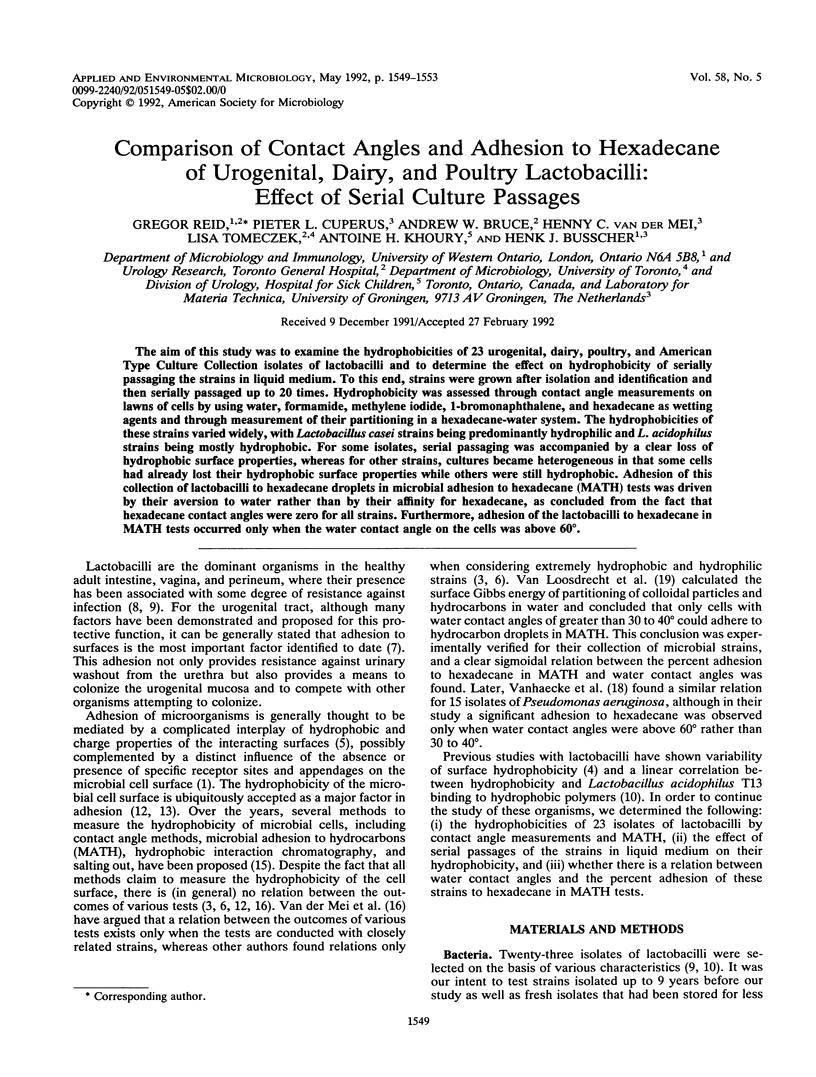
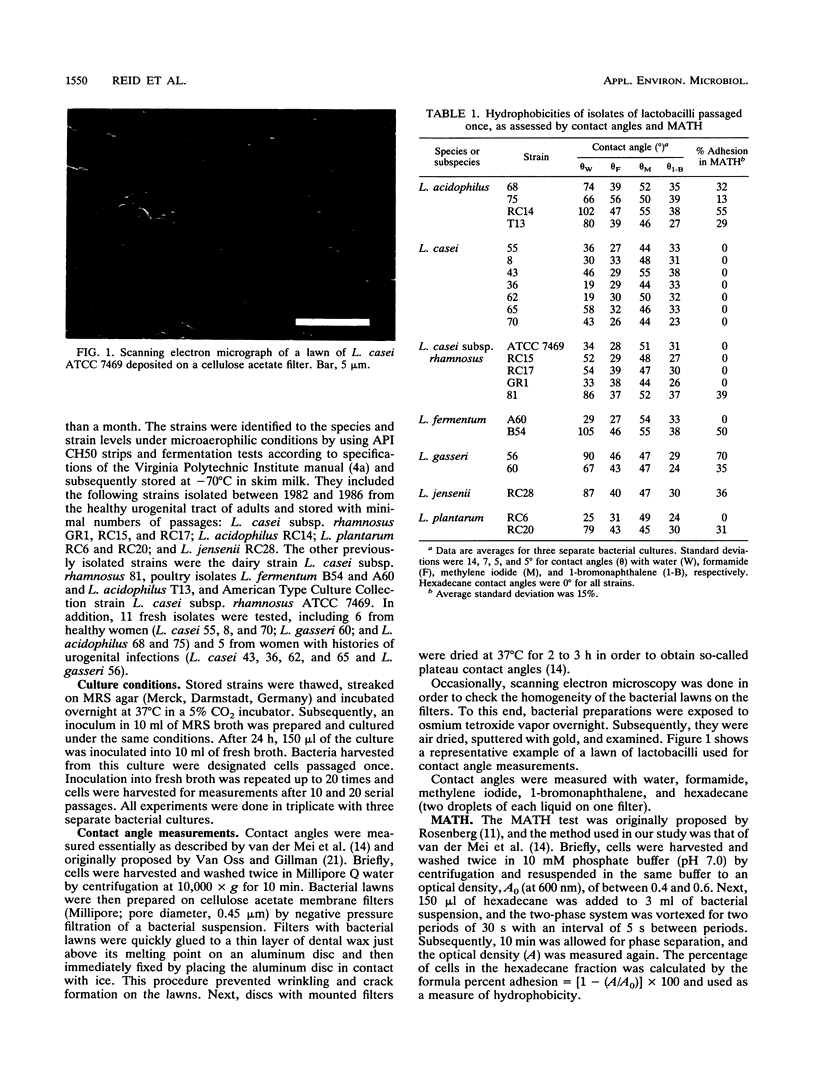
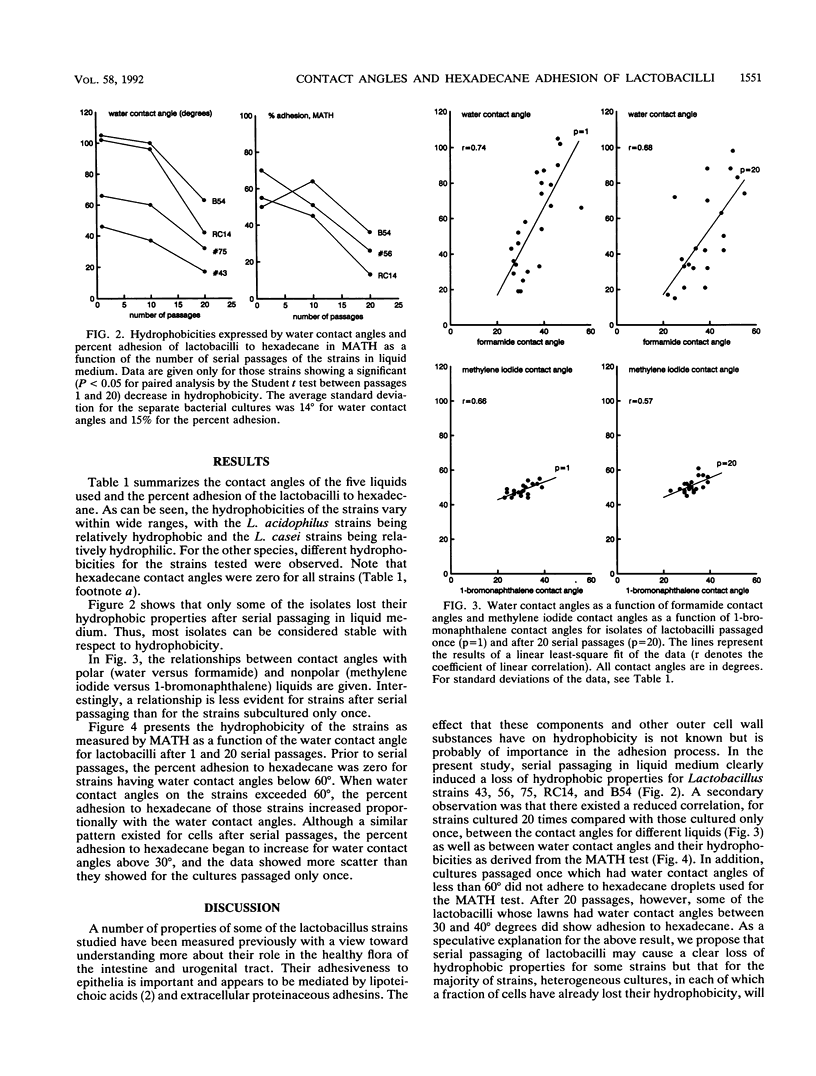
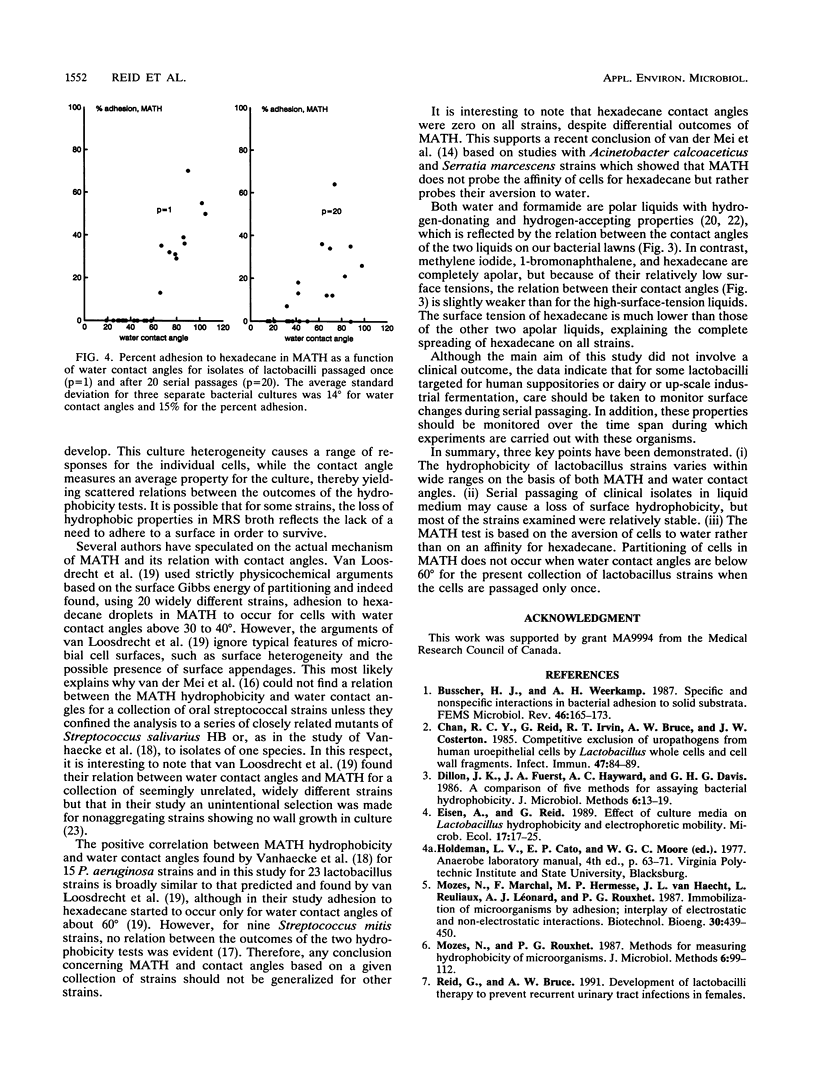
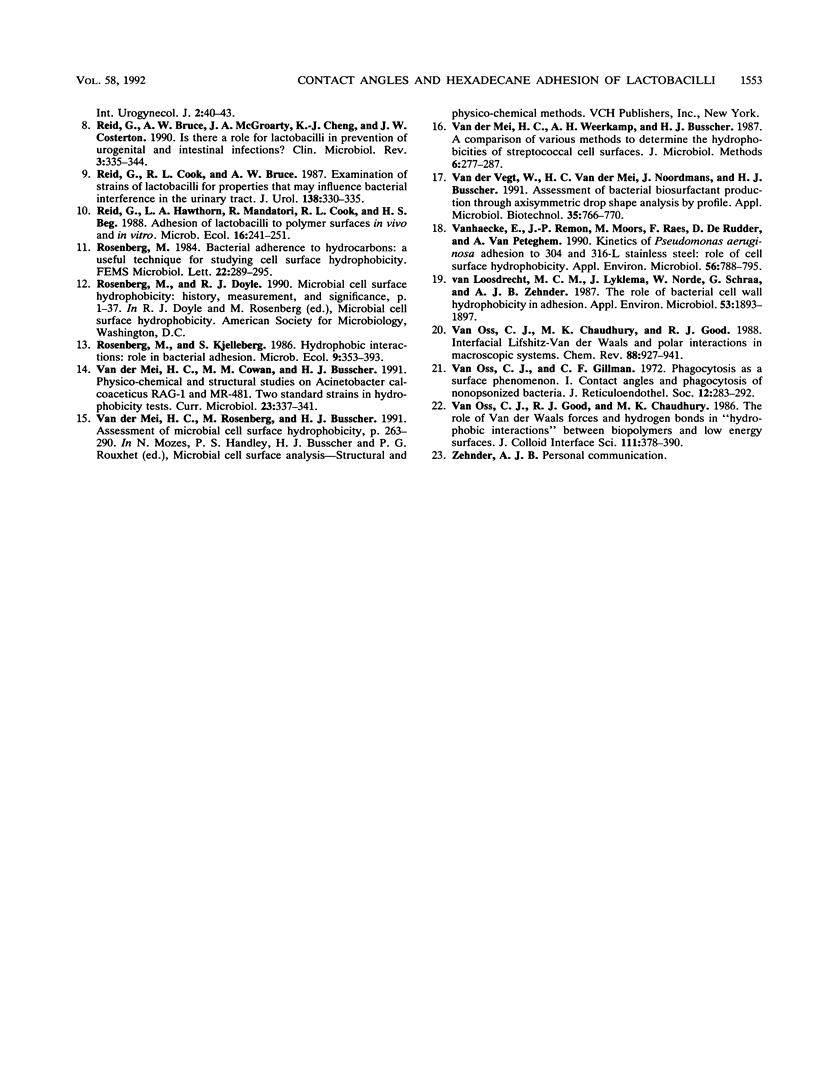
Images in this article
Selected References
These references are in PubMed. This may not be the complete list of references from this article.
- Borkman R. F., Hibbard L. B., Dillon J. The photolysis of tryptophan with 337.1 nm laser radiation. Photochem Photobiol. 1986 Jan;43(1):13–19. doi: 10.1111/j.1751-1097.1986.tb05585.x. [DOI] [PubMed] [Google Scholar]
- Chan R. C., Reid G., Irvin R. T., Bruce A. W., Costerton J. W. Competitive exclusion of uropathogens from human uroepithelial cells by Lactobacillus whole cells and cell wall fragments. Infect Immun. 1985 Jan;47(1):84–89. doi: 10.1128/iai.47.1.84-89.1985. [DOI] [PMC free article] [PubMed] [Google Scholar]
- Reid G., Bruce A. W., McGroarty J. A., Cheng K. J., Costerton J. W. Is there a role for lactobacilli in prevention of urogenital and intestinal infections? Clin Microbiol Rev. 1990 Oct;3(4):335–344. doi: 10.1128/cmr.3.4.335. [DOI] [PMC free article] [PubMed] [Google Scholar]
- Reid G., Cook R. L., Bruce A. W. Examination of strains of lactobacilli for properties that may influence bacterial interference in the urinary tract. J Urol. 1987 Aug;138(2):330–335. doi: 10.1016/s0022-5347(17)43137-5. [DOI] [PubMed] [Google Scholar]
- Van Oss C. J., Gillman C. F. Phagocytosis as a surface phenomenon. Contact angles and phagocytosis of non-opsonized bacteria. J Reticuloendothel Soc. 1972 Sep;12(3):283–292. [PubMed] [Google Scholar]
- Vanhaecke E., Remon J. P., Moors M., Raes F., De Rudder D., Van Peteghem A. Kinetics of Pseudomonas aeruginosa adhesion to 304 and 316-L stainless steel: role of cell surface hydrophobicity. Appl Environ Microbiol. 1990 Mar;56(3):788–795. doi: 10.1128/aem.56.3.788-795.1990. [DOI] [PMC free article] [PubMed] [Google Scholar]
- van Loosdrecht M. C., Lyklema J., Norde W., Schraa G., Zehnder A. J. The role of bacterial cell wall hydrophobicity in adhesion. Appl Environ Microbiol. 1987 Aug;53(8):1893–1897. doi: 10.1128/aem.53.8.1893-1897.1987. [DOI] [PMC free article] [PubMed] [Google Scholar]



